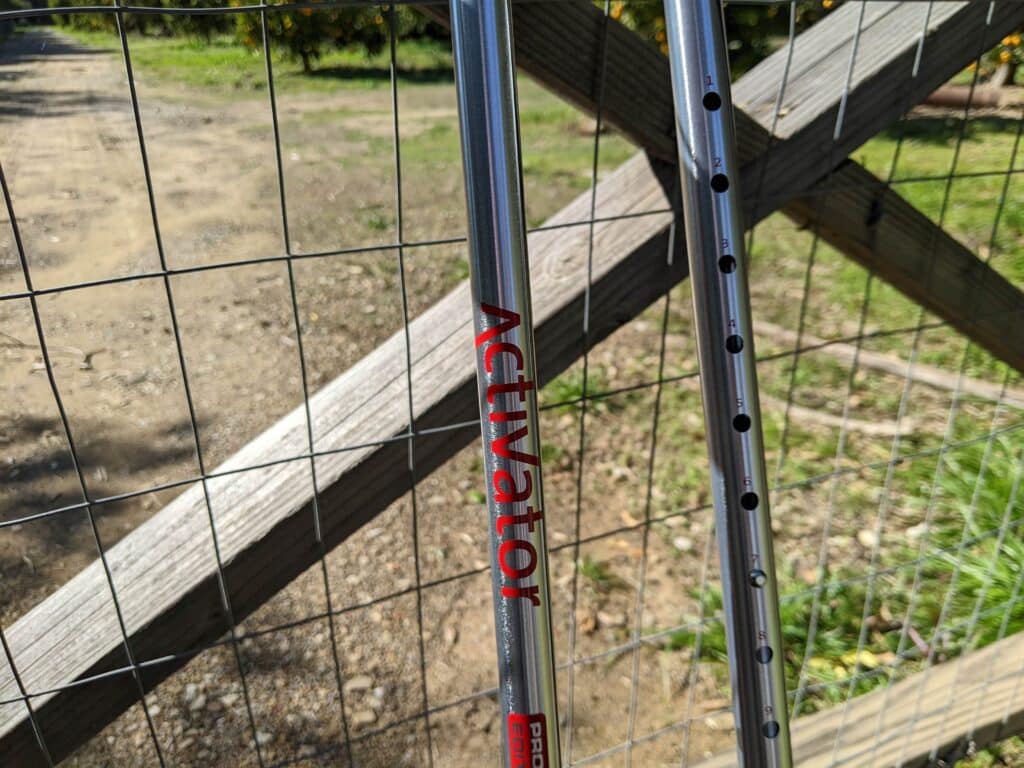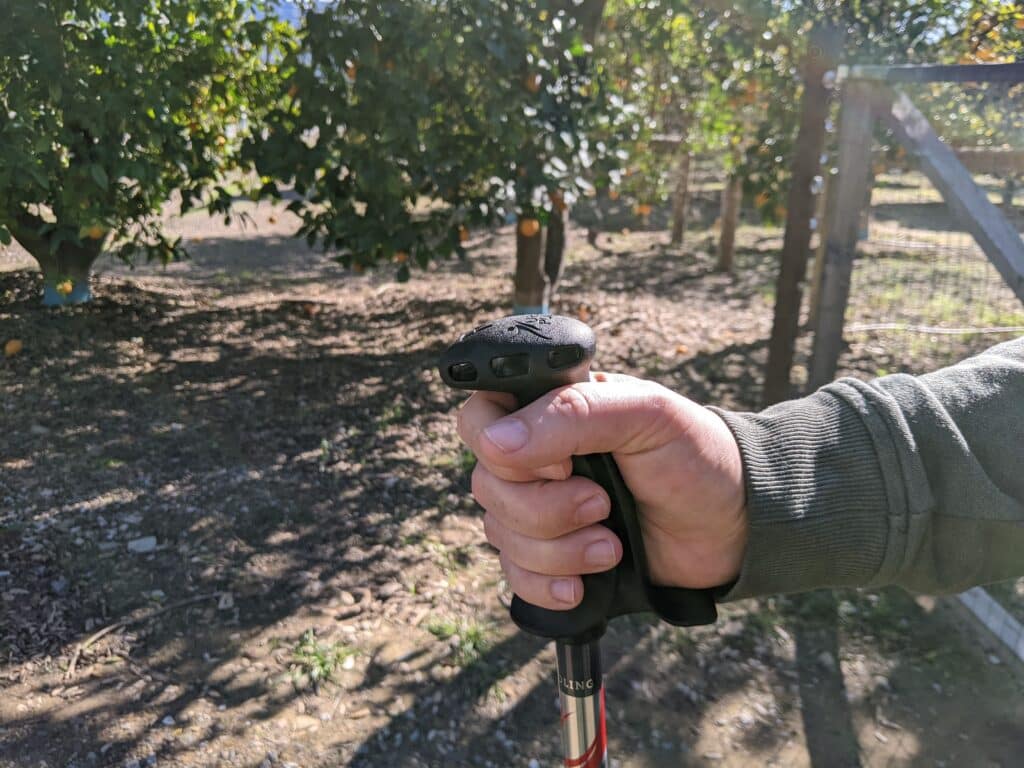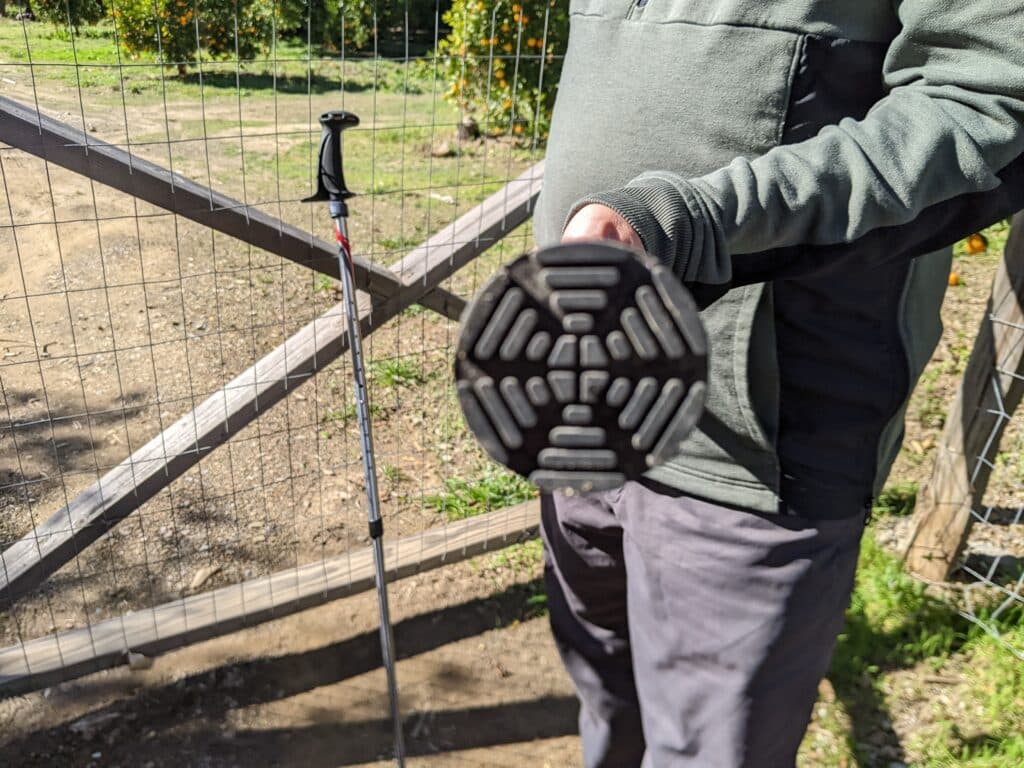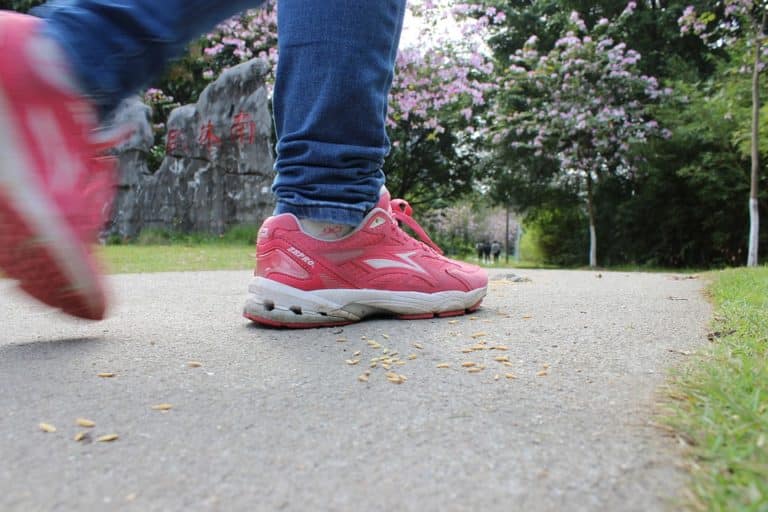Let’s face it: there are a lot of walking pole choices out there. Some are great for quick adjustments on the trail, while others fold up to fit in a backpack. There are ones with gadgets like built-in springs and compasses. Quite simply, different poles are good for different things.
Activator® poles set themselves apart through their design, which uniquely caters to the key priorities of movement specialists. They provide strength and stability, with smart additional features to minimize the risk of injury. As a mobility or exercise tool, they enhance movement effectiveness and give users a heightened sense of security. This is where these poles shine.
| PROS | CONS |
|---|---|
| Designed specifically for stability and safety | Slower adjustment mechanism than “trail” poles |
| Really well-designed grips | Lighter weight poles do exist |
| Aluminum construction adds durability | Can find cheaper poles out there |
| Footing options not available in other brands |
SOLID CONSTRUCTION
The Activator® poles are robustly constructed, using aluminum as the main material. One of the critical components of their design is sturdiness for enhanced stability. The strength of the aluminum material offers a reliable grip on a variety of terrains, ensuring that the poles can handle persistent use without compromising structural integrity.
Additionally, the lightweight nature of the aluminum material decreases user fatigue. These poles are designed for extended periods of use and cater to people who require firm support and balance for walking or exercise.
Although light, these poles resist the brittleness often associated with carbon fiber models. Hence, they are more resilient to impacts and wear, thereby extending their lifespan. Activator® poles match the robust nature of heavier poles but without the added weight, making their design a distinctive blend of strength, endurance and lightweight convenience.
HEIGHT ADJUSTMENTS
Almost every other set of poles comes with a lever or screw-down locking system for adjusting length, which can be great when you need to change pole height on the fly. The trouble with each of these locks is they tend to loosen over time. So, if we were to personally design a better pole, we’d do something different, and that’s exactly what Urban Poling did here. Instead of levers, they use a post-locking system like adjustable canes and walkers. This is a foolproof way of adjusting and knowing it won’t slip in the middle of your walk.

Figure 1: The locking height adjustment adds security to avoid poles from collapsing unexpectedly.
THE PATENTED GRIPS
The grip also has a patented handle, which I didn’t think much about until we got them out on the road. First, the grips are individual—there’s a right one and a left one—something I don’t think I’ve seen in any other pole set. With the hand-assigned grip and a wide bottom shelf, it does a good job of keeping your hand in just the right place without the feeling that you need a strap at all.

Figure 2: Note the secure fit of the grip compared to traditional “stick” grips.
WHAT’S MISSING?
The last feature I’ll mention is something they DON’T have. One of our top lessons for folks starting an exercise walking program is to leave your wrists out of the fabric loops. The reason? Picture this: You are a seasoned individual taking a leisurely stroll in a serene park. You are enjoying the peaceful melody of a bubbling brook nearby, the distant chatter of squirrels darting between trees, and the splendor of a brilliant sunset painting the sky. As you navigate the winding path with your trusty walking poles supporting every step, an unexpected distraction presents itself— a vibrant butterfly of majestic colors settles on one of the fragrant flowers bordering your path.
Your attention is naturally captured, and you pause momentarily, marveling at the sheer beauty of this little wonder of nature. As you resume your walk, however, the unseen edge of a protruding tree root lying just across the path subtly catches your foot. Caught unaware, you stumble, potentially heading for an unpleasant collision with the ground.
Now, the first advice we give in this situation is to let go of the poles. Unfortunately, with your wrists locked into the handles, there’s little you can do. Instead, your hands and wrists will get tweaked in whatever direction the poles land. Rather than just a bit of embarrassment, this has led to sprains, strains and even fractures of the wrist.

Figure 3: Comes with the stability footings. Other types are available as well for different conditions or needs.
OUR RECOMMENDATION
We recommend Urban Poling Activator® Poles for individuals who prioritize stability and injury prevention in their walking or exercise routine. These poles, thoughtfully designed with stability needs in mind, offer you a secure and lightweight aid. Crafted from durable aluminum, the Activator Poles sidestep the fragility issues often linked to ultralight backcountry counterparts. The poles feature a post-locking system, like that used in adjustable canes, delivering a steadfast and reliable adjustment mechanism, effectively mitigating the risk of slippage that is commonplace in lever and screw-down systems.
Urban Poling Activator® Poles are ideal for people who prioritize stability and want to prevent injuries during their walk or exercise regimen. These poles are specifically designed with physical therapy requirements in mind, making them a standout choice. Crafted from durable aluminum, these poles provide a secure and lightweight option, steering clear of the fragility and cost associated with ultralightweight alternatives. Their post-locking system, akin to adjustable canes, ensures a steadfast adjustment mechanism without the risk of slippage commonly found in lever or screw-down systems.
The patented grip design safeguards against wrist-related accidents, a crucial consideration for novice or seasoned users alike. Moreover, it offers ergonomic support that obviates the need for wrist straps.
While these poles excel in stability and safety, individuals seeking rapid adjustments or compact portability might find the lack of quick-change features or foldability less suited to their preferences. For those valuing increased versatility or specialized functionalities like spring-loaded mechanisms or integrated gadgets, alternative pole options may better cater to their specific needs.






